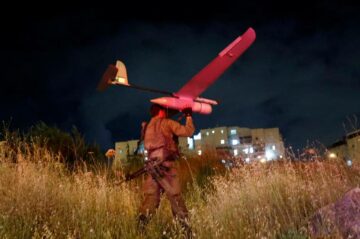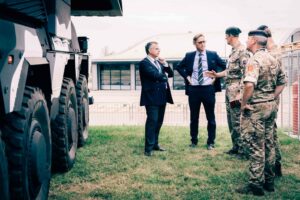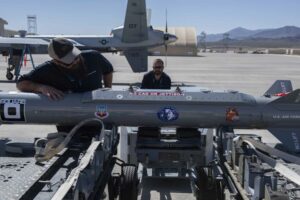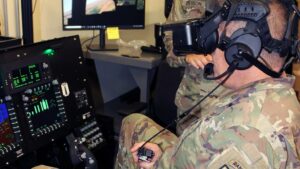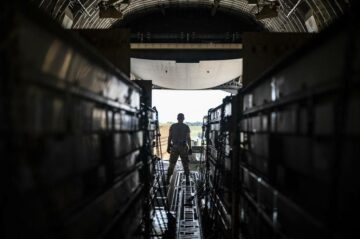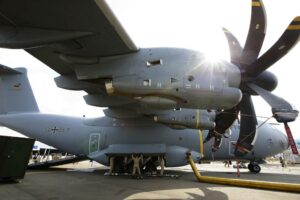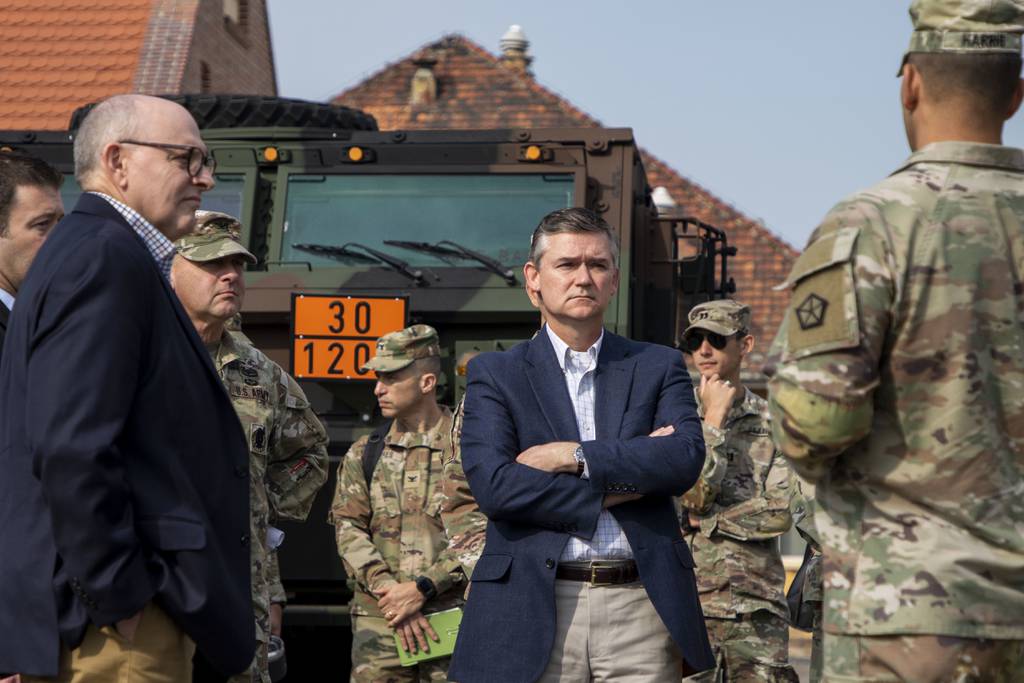
WASHINGTON — The U.S. Army has sent millions of rounds of artillery ammunition to Ukraine along with a wide variety of other weapons and equipment to support the country amid Russia’s full-scale invasion, which began in February 2022. The effort has shone a light on the Army’s inventory and the age of its organic industrial base, revealing areas that require reinforcement.
The service is also assessing its stockpile requirements as it works to rapidly replenish supplies in preparation for the possibility of facing more than one major global contingency simultaneously.
Defense News spoke with Doug Bush, the Army acquisition chief, in an interview ahead of the Association of the U.S. Army’s annual conference. He discussed how the service is trying to bolster its industrial base to restore vital stockpiles that would allow it to continue to support partners and allies, as well as how the service is preparing for future warfare.
This interview was edited for length and clarity.
What is the state of the Army’s effort to stand up new production capacity for 155mm ammunition, among other materiel, as it seeks to replenish its stocks?
Over the next year, we’re going to know a lot more about how we’re doing. But the artillery production — in October, we’re going to get to 28,000 a month. That’s double from where we were in January when we first got the money. And then the path — [William] LaPlante, [the undersecretary of defense for acquisition and sustainment], mentioned this, too — is to get to around 60,000 a month in fiscal 2024, and then getting to around 80,000 a month in fiscal 2025. And then in early FY26, the goal is still 100,000 a month.
We still need some additional resources. We’re working on it now internally and with Congress, and feeling pretty good about it. We have a plan, we’re getting the money. The hard part is actually doing it.
But our various industry partners know what they’re doing. We’ve got the right oversight mechanisms in place to make sure we can keep a thumb on things. And we’ll see what Congress says about, for example, the PAC-3 [Missile Segment Enhancement] funding.
How is the building of new facilities coming along that can produce additional 155mm shells for deeper magazines?
The construction activities in Mesquite, Texas, east of Dallas, [are] underway. If you went there now, you would see a lot of construction activity, concrete being poured. So things are on track, but [General Dynamics Ordnance and Tactical Systems is] not producing there yet. Production equipment starts coming later in the year, and production will actually start next year.
It’s a similar story at IMT in Canada. [The company is] still on track to start up initial production early next year.
Those are our two for big metal parts. Really, we only have two facilities now in Pennsylvania to do that. We’re going to add two completely new factories.
Coming along beside that is additional capacity to load the shells with explosives. That’s currently done in Iowa. We’re already on contract to increase that capacity in Kansas and Arkansas, so all those things are moving along rapidly.
In terms of scale, the Texas activity is much larger, but both are important. We need improvements in Pennsylvania, we need the Canada thing and we need Texas to all succeed to hit the ramp we are on.
What other single sources of failure within the industrial base — both organic and across the defense sector — have you worried? What are you doing to resolve any issues?
[In some instances], we don’t have a plan for making sure we have multiple sources. That’s the whole idea behind the additional load and assemble pack capacity. Iowa is very important, and we’re expanding it, but we need redundancy.
The same goes for metal parts. It’s why we were confronted early on with: OK, do we just massively expand the locations we have, or do we place multiple bets in multiple places? And we went with the latter approach. We thought that was lower risk, even if it’s a little more expensive.
On the artillery side, we are very carefully studying that question. As long as resources come through, we have a path to have at least two sources for every part of that operation — [in] some cases more than two.
Cannon tubes are built at one arsenal. Isn’t that a single source of failure?
As of now at Watervliet Arsenal, [New York], our expansion there is proving successful. But if we need to, we have authority from Congress to look at other sources. But for now the focus has been expanding Watervliet and helping it just get production up.
Jen Judson is an award-winning journalist covering land warfare for Defense News. She has also worked for Politico and Inside Defense. She holds a Master of Science degree in journalism from Boston University and a Bachelor of Arts degree from Kenyon College.
- SEO Powered Content & PR Distribution. Get Amplified Today.
- PlatoData.Network Vertical Generative Ai. Empower Yourself. Access Here.
- PlatoAiStream. Web3 Intelligence. Knowledge Amplified. Access Here.
- PlatoESG. Carbon, CleanTech, Energy, Environment, Solar, Waste Management. Access Here.
- PlatoHealth. Biotech and Clinical Trials Intelligence. Access Here.
- Source: https://www.defensenews.com/interviews/2023/10/11/four-questions-with-the-us-armys-acquisition-chief/
- :has
- :is
- :not
- :where
- $UP
- 000
- 100
- 2022
- 2024
- 2025
- 28
- 60
- 70
- 8
- 80
- a
- About
- about IT
- acquisition
- across
- activities
- activity
- actually
- add
- Additional
- age
- ahead
- All
- allow
- along
- already
- also
- Amid
- ammunition
- among
- an
- and
- annual
- any
- approach
- ARE
- areas
- arkansas
- Army
- around
- Arsenal
- Arts
- AS
- Assessing
- Association
- At
- authority
- award-winning
- base
- been
- began
- behind
- being
- Bets
- Big
- bolster
- boston
- Boston University
- both
- Building
- but
- CAN
- Canada
- Capacity
- carefully
- cases
- chief
- clarity
- College
- come
- coming
- company
- completely
- concrete
- Conference
- Congress
- construction
- continue
- contract
- country
- covering
- Currently
- Dallas
- deeper
- Defense
- Degree
- discussed
- do
- doing
- done
- Dont
- double
- doug
- dynamics
- Early
- East
- effort
- enhancement
- equipment
- Even
- Every
- example
- Expand
- expanding
- expansion
- expensive
- facilities
- facing
- factories
- Failure
- February
- First
- Fiscal
- Focus
- For
- four
- from
- full-scale
- funding
- future
- General
- get
- getting
- Global
- goal
- Goes
- going
- good
- got
- Hard
- Have
- he
- helping
- Hit
- holds
- How
- HTTPS
- idea
- if
- images
- important
- improvements
- in
- Increase
- industrial
- industry
- industry partners
- initial
- inside
- internally
- Interview
- inventory
- Iowa
- issues
- IT
- ITS
- January
- journalism
- journalist
- jpg
- just
- Kansas
- Keep
- Know
- Land
- larger
- later
- least
- Length
- light
- little
- load
- locations
- Long
- Look
- Lot
- lower
- magazines
- major
- make
- Making
- massively
- master
- mechanisms
- mentioned
- metal
- millions
- money
- Month
- more
- moving
- much
- multiple
- Need
- New
- New York
- news
- next
- now
- october
- of
- on
- ONE
- only
- operation
- or
- organic
- Other
- our
- Oversight
- Pack
- part
- partners
- parts
- path
- Pennsylvania
- Place
- Places
- plan
- plato
- Plato Data Intelligence
- PlatoData
- possibility
- preparation
- preparing
- pretty
- produce
- producing
- Production
- proving
- question
- Questions
- Ramp
- rapidly
- really
- replenish
- require
- Requirements
- Resources
- restore
- revealing
- right
- Risk
- rounds
- s
- same
- says
- Scale
- Science
- sector
- see
- Seeks
- segment
- sent
- service
- she
- side
- similar
- simultaneously
- single
- So
- some
- Source
- Sources
- stand
- start
- starts
- State
- Still
- Stocks
- Story
- Studying
- succeed
- successful
- support
- sure
- Systems
- tactical
- terms
- texas
- than
- that
- The
- The State
- then
- There.
- thing
- things
- this
- those
- thought
- Through
- to
- too
- track
- trying
- two
- u.s.
- Ukraine
- Underway
- university
- us
- variety
- various
- very
- vital
- was
- we
- Weapons
- WELL
- went
- were
- What
- when
- which
- whole
- why
- wide
- will
- william
- with
- within
- worked
- working
- works
- worried
- would
- year
- yet
- york
- you
- zephyrnet

